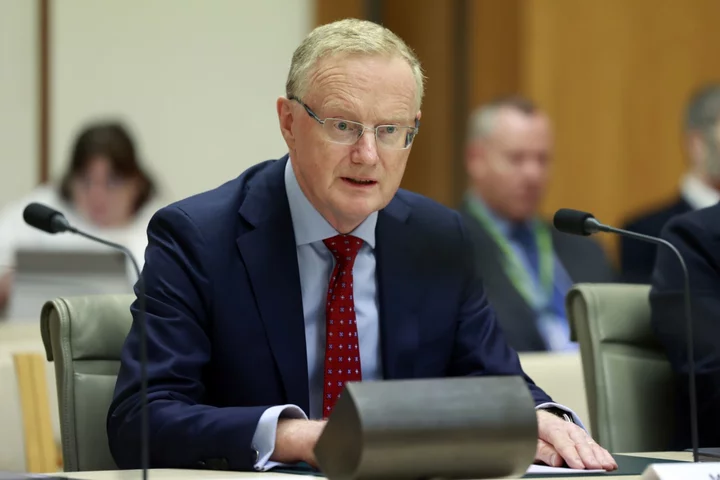Australia’s central bank is keeping its options open on further policy tightening as it studies which way services prices and household consumption break, outgoing Governor Philip Lowe said.
“With inflation having been significantly above target for some time now, the board wants to have reasonable confidence that inflation will return to target over the current forecast period,” the Reserve Bank chief said in opening remarks during testimony before a panel of lawmakers in Canberra on Friday. “We will do what is necessary to achieve that outcome.”
The RBA forecasts inflation to fall back within it 2-3% target in late 2025.
Lowe is trying to cool prices while holding onto significant job gains in recent years and remains uncertain about how much cash consumers have to keep spending. The RBA has increased borrowing costs by 4 percentage points since May 2022.
He’s put the central bank in data-dependent mode when it comes to policy. The RBA is monitoring household spending, the outlook for inflation and the domestic and global economies. Working in his favor, consumer prices are showing signs of cooling while jobs gains are still intact.
“One related concern is that persistent high inflation could see inflation expectations adjust upwards,” the governor said. “But the longer inflation stays high, the greater the likelihood that businesses and workers will come to doubt that inflation will return to target and, in response, they will adjust their behaviour.”
Lowe’s appearance comes just over a month before his deputy Michele Bullock takes the helm at the RBA. It will be the first time since the announcement of her promotion to the top job that Bullock will speak in public on policy. Her words will be closely scrutinized by traders and economists alike.
Lowe faced a mounting backlash over the RBA’s communications during the current tightening cycle, the most aggressive in more than three decades. He’s apologized for initially signaling that rates would remain at a record low until 2024 but has brushed aside other criticism as “noise” that comes with any tightening cycle.
Money markets reckon the RBA is likely done tightening, with only a small chance of a hike seen by early next year. Economists’ median estimate is for one more rate increase for a peak of 4.35%.
Labor market strength has been a key reason why the central bank anticipates Australia can avoid a recession. But there are now signs of a slowdown with three consecutive quarters of falling retail sales volumes, consumer sentiment at “deeply pessimistic” levels and job vacancies coming off a peak.

